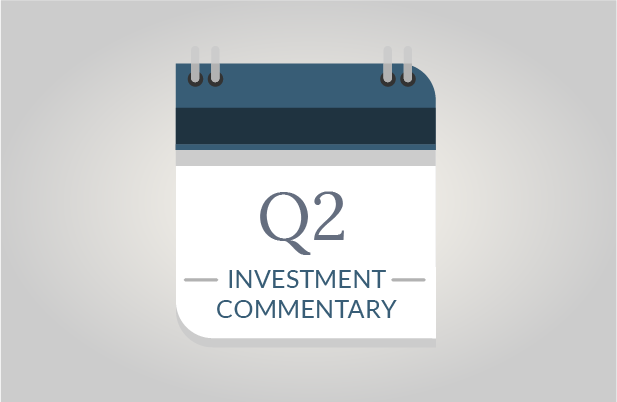Ever since the 2008 financial crisis, investors have been increasingly attracted to structured CDs (also known as market-linked CDs), lured by the concept that they’ll enjoy market upside potential, without the risks associated with being invested in the stock market. This makes them a particularly attractive proposition for investors during times of market volatility.
We’ve certainly noticed an uptick in interest since the markets entered an incredibly volatile period late last year. However, we thought it prudent to review why structured or market-linked CDs could in fact be detrimental during such periods of volatility.
Structured CDs are radically different from traditional CDs, where you get your money back plus interest earned. Structured CDs perform based upon an underlying index (e.g., the S&P 500), or a basket of indices to which they’re linked. The allure of structured CDs is that they often cap downside loss exposure and/or offer a minimum guaranteed return. However, the devil’s always in the details. Every structured CD is different in its terms and conditions, which are often long and complex in nature. Here’s why you need to be careful before simply making an investment.
Subpar Guaranteed Rates
Guaranteed returns, if any, are often less than what you can earn on a traditional CD. If the investment doesn’t work out well to the upside, you might regret not buying a traditional CD that would’ve paid a higher guaranteed interest rate.
Potential Market Downside In Structured or Market-Linked CDs
Some market-linked CDs limit losses to zero percent, but many others allow you to participate in losses to a stated threshold e.g., you might participate in the first 5% of losses, while the market-linked CD protects you from anything more severe. Possible participation in losses is distinctly different than the full protection from losses and guaranteed returns offered by a traditional CD.
Infrequent Pricing Dates
A primary reason why we don’t favor structured CDs is the fact that performance is often dependent on just a few days in a given year, including the date on which the CD matures. Overall trends don’t matter; if the performance is negative on those selected dates, your final returns will be impacted, even if the aggregate downside exposure is limited over the full term of the CD.
- This is an example of how interim volatility over a structured CD term can be detrimental to your long-term success. If you buy and hold a traditional CD through a downturn, the downturn effectively becomes a non-event because you rode it out. However, if you own a structured CD, that downturn pricing event could negatively impact your overall investment result, even if you don’t sell on that date.
Upside Caps On Structured CDs
The issues with structured CDs are further exacerbated by the fact that your upside participation is often limited. This is a key variable to consider when multiple pricing dates are involved. You typically only get to participate in a fraction of the upside on pricing dates, despite being fully exposed to the downside on pricing dates. The aggregate of your pricing dates is what determines your ultimate return.
- This is another key reason why we don’t favor structured CDs or market-linked CDs during volatile times in the market. If you only get some of the upside embedded in your investment calculation, while feeling the full effect of any downside, your final or net return could be significantly diluted as a result of interim volatility
Recognizing that this is complicated, we offer a rudimentary example. Assume you invest $10,000 into a CD that computes its return on a quarterly basis over a two year period. Assume the upside potential is capped at 8%, and that aggregate downside potential is capped at 5%, with a guaranteed rate of return of 2% if losses exceed 5%.
| Pure Index Investment | Capped Structured CD | |||
|---|---|---|---|---|
| % Performance | $ Investment | % Performance | $ Investment | |
| Initial | -- | $10,000 | -- | $10,000 |
| 1st Qtr | 10% | $11,000 | 8% | $10,800 |
| 2nd Qtr | -5% | $10,450 | -5% | $10,260 |
| 3rd Qtr | -7% | $9,719 | -7% | $9,542 |
| 4th Qtr | 15% | $11,176 | 8% | $10,305 |
| 5th Qtr | -9% | $10,170 | -9% | $9,378 |
| 6th Qtr | 3% | $10,476 | 3% | $9,659 |
| 7th Qtr | -7% | $9,742 | -7% | $8,983 |
| 8th Qtr | 20% | $11,691 | 8% | $9,702 |
| Net | + $1,691 investment gain | - $299 investment loss | ||
In the above example, you would’ve gained $1,691 on your investment had you invested in a pure index investment. However, in the structured CD example, your net investment return equates to a loss of $299, due to the capping of upside exposure while still absorbing the full interim downside loss potential.
While on the surface, structured or market-linked CDs appear to offer market upside potential with limited downside risk, remember the old adage: you can’t have your cake and eat it too. These instruments sometimes work and might be appropriate for a selected portion of your investment portfolio. However, we caution investors to carefully understand the complexities of structured or market-linked CDs, how they might benefit you, but also how they could potentially harm your upside exposure potential.
SageVest Wealth Management proudly accepts the ongoing investment due diligence role for our clients, ensuring investment selections are appropriate within the context of client goals, objectives, and financial needs, as well as market conditions. Please contact us for more information about our customized investment management and wealth management services.




